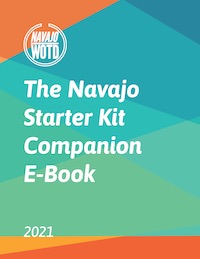diyogí
rug or weaving
dih yoh gih
Diyogí is the Navajo name for rug.
Authentic Navajo rugs, of course, are famous for being woven from the painstaking labor of sheering the wool of a sheep, cleaning, carding the wool, dyeing, and spinning it into thread. The dyes must sometimes be collected from far-away places, making the process even more involved. Looms must be made, as well as the tools for the weaving.
Navajo rugs are highly abstract; designs convey ideas through patterns and shapes, as well as colors. Skilled weavers know the different styles based upon regional designs, and can create unique rugs that stay true to the style.
